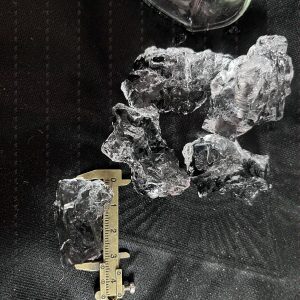Potassium polyacrylate, like sodium polyacrylate, is a superabsorbent polymer. It can absorb 300-500 times its weight in water, making it highly effective for water retention applications, such as in agriculture for soil conditioning and water management.

Proper Disposal of पोटेशियम पॉलीएक्रिलेट
To safely dispose of potassium polyacrylate, follow these guidelines:
- Small Quantities: Can be disposed of in regular household trash, which will be taken to a landfill.
- Professional Disposal Services: For larger amounts, contact local waste disposal services to ensure proper handling and disposal.
Methods to Dissolve Potassium Polyacrylate
Potassium polyacrylate does not dissolve in water but can be broken down using specific chemicals:
- Salt (Sodium Chloride): Adding a concentrated salt solution will cause the polymer to release absorbed water and shrink.
- Calcium Chloride: This chemical is even more effective than sodium chloride in breaking down the polymer gel.
Effective Removal of Potassium Polyacrylate
To get rid of potassium polyacrylate, consider the following methods:
- Salt Solution: Create a strong saltwater solution and mix it with the polymer gel. This will cause the gel to release the absorbed water and contract.
- Chemical Disposal: For large quantities, consult local waste management authorities for appropriate disposal procedures.
Creating Fake Snow with Potassium Polyacrylate
Potassium polyacrylate can be used to create realistic fake snow for decorations or sensory activities. Here’s how to make it:
- Materials:
- Potassium polyacrylate (available as a powder)
- Water
- Mixing bowl
- Instructions:
- Place Powder in Bowl: Put the potassium polyacrylate powder in a mixing bowl.
- Add Water: Gradually add water to the powder while stirring.
- Observe Expansion: The powder will absorb the water and expand into a fluffy, snow-like substance.
- Adjust Texture: For a wetter consistency, add more water. For a drier texture, use more powder.
This synthetic snow is ideal for decorative purposes, sensory play, and educational experiments. Handle it carefully to avoid ingestion and contact with eyes.

